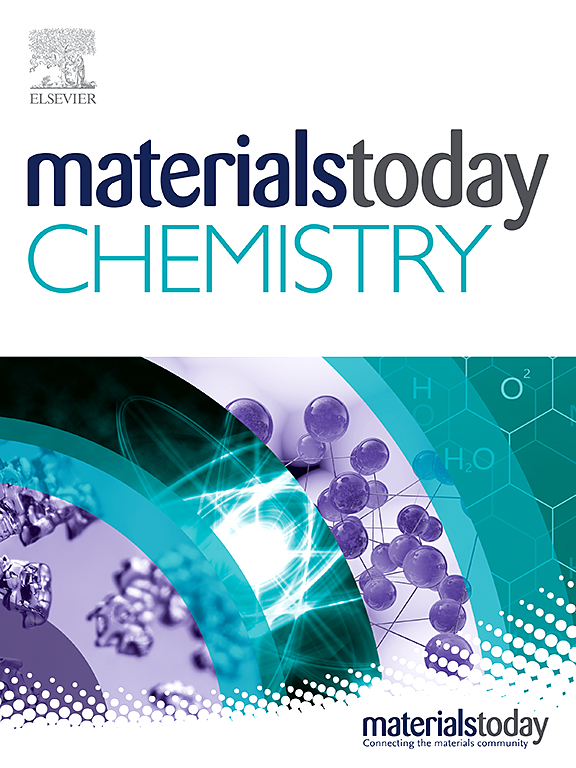Controlled incorporation of Zn into nitrogen-doped porous carbon boosts the alcohol dehydrogenation to carboxylic acids
IF 6.7
2区 化学
Q1 CHEMISTRY, MULTIDISCIPLINARY
引用次数: 0
Abstract
The dehydrogenation of primary alcohols to carboxylic acids is a crucial process in chemical industries such as fibers and plastics. Carboxylic acids, the resulting products, are not only important chemical raw materials but also fundamental pharmaceutical intermediates. Zn-based catalysts have gained attention as a promising option for this transformation owing to their economic cost and abundant reserves. However, stability issues, including structure collapse and morphological changes, have plagued the reported Zn-based catalysts during this transformation. In response to these challenges, this study focused on the design and development of Zn-based catalysts via controlled incorporation of Zn into nitrogen-doped porous carbon to modulate the numbers of defects and Lewis acid-base site pairs. Through extensive screening of various parameters, the best-performing catalyst, namely Zn@NC-800, exhibited high activity and remarkable stability, surpassing all the reported Zn-based catalysts. Moreover, this catalyst demonstrated great recyclability since it could maintain approximately 90 % yields after 9 cycles. Notably, the product formation rate of this catalyst could reach 3833 μmol·g·h, exceeding that of most reported non-noble metal heterogeneous catalysts. Consequently, this study offers a promising approach for efficiently and stably catalyzing alcohol dehydrogenation reactions using non-noble metals.在掺氮多孔碳中有控制地掺入锌可促进醇脱氢生成羧酸
将伯醇脱氢为羧酸是纤维和塑料等化学工业中的一个重要过程。由此产生的羧酸不仅是重要的化工原料,也是基本的医药中间体。锌基催化剂因其经济成本和丰富的储量而备受关注,被视为这一转化过程中的理想选择。然而,已报道的锌基催化剂在这一转化过程中存在稳定性问题,包括结构崩溃和形态变化。为了应对这些挑战,本研究侧重于通过在掺氮多孔碳中可控地加入 Zn 来调节缺陷和 Lewis 酸碱位点对的数量,从而设计和开发 Zn 基催化剂。通过对各种参数的广泛筛选,性能最佳的催化剂(即 Zn@NC-800)表现出了高活性和显著的稳定性,超过了所有已报道的锌基催化剂。此外,这种催化剂还具有很好的可回收性,因为它在 9 次循环后仍能保持约 90% 的产率。值得注意的是,这种催化剂的产物生成率高达 3833 μmol-g-h,超过了大多数已报道的非贵金属异相催化剂。因此,这项研究为使用非贵金属高效、稳定地催化醇脱氢反应提供了一种可行的方法。
本文章由计算机程序翻译,如有差异,请以英文原文为准。
求助全文
约1分钟内获得全文
求助全文
来源期刊

Materials Today Chemistry
Multiple-
CiteScore
8.90
自引率
6.80%
发文量
596
审稿时长
33 days
期刊介绍:
Materials Today Chemistry is a multi-disciplinary journal dedicated to all facets of materials chemistry.
This field represents one of the fastest-growing areas of science, involving the application of chemistry-based techniques to the study of materials. It encompasses materials synthesis and behavior, as well as the intricate relationships between material structure and properties at the atomic and molecular scale. Materials Today Chemistry serves as a high-impact platform for discussing research that propels the field forward through groundbreaking discoveries and innovative techniques.
文献相关原料
公司名称
产品信息
阿拉丁
dimethylformamide (DMF)
阿拉丁
triethylamine (ET3N)
阿拉丁
1,3,5-benzenetricarboxylic acid
阿拉丁
Zn(O2CCH3)2·2H2O
阿拉丁
2-methylimidazole
阿拉丁
zinc oxide (ZnO)
阿拉丁
Zinc nitrate (Zn(NO3)2·6H2O)
阿拉丁
1,4-dioxane
阿拉丁
toluene
阿拉丁
m-xylene
阿拉丁
1,3,5-trimethoxybenzene
阿拉丁
ethyl acetate (EA)
阿拉丁
hydrochloric acid (HCl)
阿拉丁
sodium sulfate (Na2SO4)
阿拉丁
lithium hydroxide (LiOH)
阿拉丁
sodium hydroxide (NaOH)
阿拉丁
potassium hydroxide (KOH)
阿拉丁
methanol
阿拉丁
melamine
阿拉丁
glucose
 求助内容:
求助内容: 应助结果提醒方式:
应助结果提醒方式:


